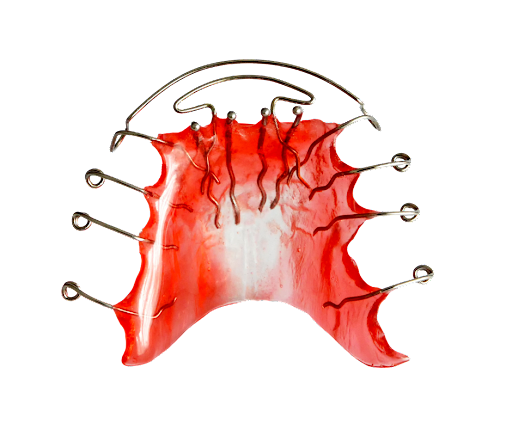To understand the importance of retainers, it’s helpful to learn about the nature of teeth and orthodontic movements. Teeth are not set in stone. The jaw forms a solid, supportive socket around a bed of soft tissues which holds and nurtures the tooth. This socket is flexible and changes based on the varying forces and conditions of the mouth. The original alignment of the teeth is influenced by all the different pressures around it such as your tongue, the tightness of your lips, and the presence, or lack thereof, of neighboring teeth.
In addition, the gingival fibers that attach the gum to the tooth stretch like a bungee cord as the tooth is straightened. These fibers will want to pull the tooth back towards its original position after treatment is completed.
Unless held in place by a retainer, you can assume that your beautiful new smile will slowly but surely regress back to its original alignment.
Over time, the speed at which the tooth position relapses is slowed. After a couple of months of constant retainer wear, they can be worn only at night as part of a routine.

Some don’t like the idea of having to wear retainers forever, but once you form the habit of putting them on at bedtime, it feels strange to fall asleep without them.
There are different types of retainers. The earlier style of retainer was the Hawley retainer. Made of custom-molded, rigid plastic and metal, this retainer works by running wires across the front of the teeth to maintain alignment. This retainer is effective but obvious and bulky.
For patients who don’t want to take any chances of forgetting to wear their retainers, fixed retainers are commonly used as a set it and forget it type of retainer. They consist of a thin wire run along and glued to the back of the front teeth. The benefit of this kind of retainer is that it doesn’t need to be taken out, so you don’t have to rely on remembering to wear it. A con with this type is since it’s only bonded to the front 6 or so teeth, the rest of the teeth can continue to shift. It can also be difficult to maintain proper hygiene, as cleaning behind the wire can be tricky and tartar buildup can become a problem.

A preferred type these days is the clear plastic Essix retainer. Similar to clear aligner trays, custom clear retainers are made either with an impression or a 3D scan. The cons of this type include being more easily lost or damaged. The pros are they are comfortable, visually pleasing, and effective. These also double as a nightguard which protects enamel if you grind your teeth at night.
If you have trouble with consistency, sometimes, fixed and removable retainers can be used in tandem to ensure alignment.
Like brushing and flossing, teens don’t always fully grasp the long-term importance of being diligent with retainer wear. Parents can become frustrated after spending valuable time and money all for results to be forfeited due to retainer neglect. Adult patients often come in for repeat treatment or touch-ups, annoyed with their younger selves now that teeth are noticeably shifting again.
Your orthodontist will stress the importance of retainer wear and patients should do all they can to form a habit of wearing their retainer nightly. Keeping your retainer in its case near your toothbrush and putting it on right after brushing and flossing is our advice on keeping track. For those still having trouble remembering, setting a notice on a cellphone or other device can be helpful. If you still can’t get it, it may be time to contact your orthodontist about a permanent retainer.

Keeping your retainer clean is important as well. Without proper maintenance, retainers can harbor bacteria which can affect hygiene and overall oral health. Denture cleaning tabs in a cup of water next to your bathroom sink is the simplest way to be regular about cleaning. Drop your retainers in the solution first thing in the morning so you don’t accidently leave them elsewhere. You may be tempted to brush them off with toothpaste as you brush your teeth, but toothpaste has small abrasive particles in them which can scratch the surface, leaving microscopic crevices for bacteria growth.

Permanent retainers require extra vigilance with brushing and flossing. Take care to brush thoroughly from both angles. Flossing can be tricky, you may use a floss threader to help guide the floss behind the retainer. If the hassle discourages you from flossing, it may be time to invest in a water flosser as a backup option.
You should keep up regular visits with your dentist to keep on top of hygiene and monitor gum and dental condition.
All in all, retainers are not difficult to make a part of your daily routine if you make the habit right away. They keep all the hard orthodontic work from getting wasted and should not be forgotten as a final and vital step in the process of a beautiful smile. Get in touch with our team at Red Leaf Orthodontics today with any questions you may have!




